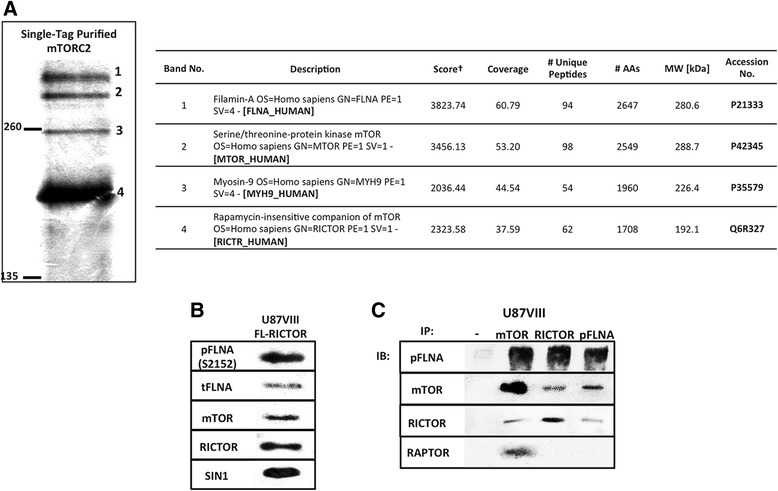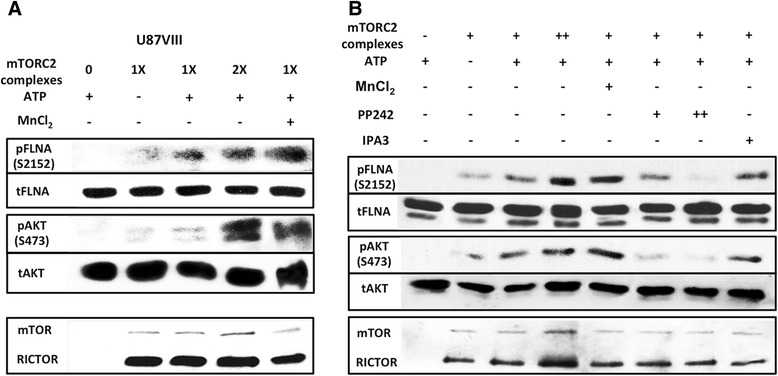Recombinant Human FLNA protein, MYC/DDK-tagged
| Cat.No. : | FLNA-185H |
| Product Overview : | Recombinant Human FLNA, transcript variant 1, fused with MYC/DDK tag at C-terminal was expressed in HEK293. |
- Specification
- Gene Information
- Related Products
- Citation
- Download
| Species : | Human |
| Source : | HEK293 |
| Tag : | DDK&Myc |
| Description : | The protein encoded by this gene is an actin-binding protein that crosslinks actin filaments and links actin filaments to membrane glycoproteins. The encoded protein is involved in remodeling the cytoskeleton to effect changes in cell shape and migration. This protein interacts with integrins, transmembrane receptor complexes, and second messengers. Defects in this gene are a cause of several syndromes, including periventricular nodular heterotopias (PVNH1, PVNH4), otopalatodigital syndromes (OPD1, OPD2), frontometaphyseal dysplasia (FMD), Melnick-Needles syndrome (MNS), and X-linked congenital idiopathic intestinal pseudoobstruction (CIIPX). Two transcript variants encoding different isoforms have been found for this gene. |
| Form : | 25 mM Tris.HCl, pH 7.3, 100 mM glycine, 10% glycerol. |
| Molecular Mass : | 280.6 kDa |
| Purity : | > 80% as determined by SDS-PAGE and Coomassie blue staining |
| Concentration : | >50 ug/mL as determined by microplate BCA method |
| Gene Name | FLNA filamin A, alpha [ Homo sapiens ] |
| Official Symbol | FLNA |
| Synonyms | FLNA; filamin A, alpha; filamin A, alpha (actin binding protein 280) , FLN, FLN1, OPD1, OPD2; filamin-A; ABP 280; actin binding protein 280; filamin-1; alpha-filamin; non-muscle filamin; endothelial actin-binding protein; FLN; FMD; MNS; OPD; ABPX; CVD1; FLN1; NHBP; OPD1; OPD2; XLVD; XMVD; FLN-A; ABP-280; FLJ43642; DKFZp434P031; |
| Gene ID | 2316 |
| mRNA Refseq | NM_001110556 |
| Protein Refseq | NP_001104026 |
| MIM | 300017 |
| UniProt ID | P21333 |
| Chromosome Location | Xq28 |
| Pathway | Androgen Receptor Signaling Pathway, organism-specific biosystem; Cell junction organization, organism-specific biosystem; Cell-Cell communication, organism-specific biosystem; Cell-extracellular matrix interactions, organism-specific biosystem; Focal Adhesion, organism-specific biosystem; Focal adhesion, organism-specific biosystem; Focal adhesion, conserved biosystem; |
| Function | Fc-gamma receptor I complex binding; Rac GTPase binding; Ral GTPase binding; Rho GTPase binding; actin binding; actin filament binding; glycoprotein binding; protein binding; protein homodimerization activity; protein kinase C binding; signal transducer activity; small GTPase binding; transcription factor binding; |
| ◆ Recombinant Proteins | ||
| FLNA-4155HFL | Recombinant Full Length Human FLNA protein | +Inquiry |
| FLNA-185H | Recombinant Human FLNA protein, MYC/DDK-tagged | +Inquiry |
| FLNA-28906TH | Recombinant Human FLNA, His-tagged | +Inquiry |
| FLNA-6143C | Recombinant Chicken FLNA | +Inquiry |
| FLNA-5086H | Recombinant Human FLNA Protein, Myc/DDK-tagged, C13 and N15-labeled | +Inquiry |
| ◆ Native Proteins | ||
| FLNA-170C | Active Native chicken FLNA | +Inquiry |
| FLNA-873T | Native Turkey FLNA Protein | +Inquiry |
Significance of filamin A in mTORC2 function in glioblastoma
Journal: Molecular Cancer PubMed ID: 26134617 Data: 2015/7/2
Authors: Naphat Chantaravisoot, Piriya Wongkongkathep, Fuyuhiko Tamanoi
Article Snippet:Kinase activities of mTORC2 from U87vIII cells expressing FLAG-RICTOR were examined in various conditions using affinity purified mTORC2 as described above.Kinase activities of mTORC2 from U87vIII cells expressing FLAG-RICTOR were examined in various conditions using affinity purified mTORC2 as described above.. Purified FLNA protein (C-terminal fragment amino acid 1730–2639; Creative BioMart) from E. coli and purified AKT protein (full-length; EMD Millipore) were used as substrates for the kinase assay.. In each reaction, purified mTORC2 and its substrate (FLNA or AKT) were incubated in a buffer containing 20 mM Tris-HCl (pH 7.5), 10 mM MgCl 2 , 0.2 mM ATP for 25 min.In each reaction, purified mTORC2 and its substrate (FLNA or AKT) were incubated in a buffer containing 20 mM Tris-HCl (pH 7.5), 10 mM MgCl 2 , 0.2 mM ATP for 25 min.

Purification, identification, and characterization of mTORC2 and its binding partners. a Silver-stained high molecular weight mTORC2

Not For Human Consumption!
Inquiry
- Reviews (0)
- Q&As (0)
Ask a Question for All FLNA Products
Required fields are marked with *
My Review for All FLNA Products
Required fields are marked with *



